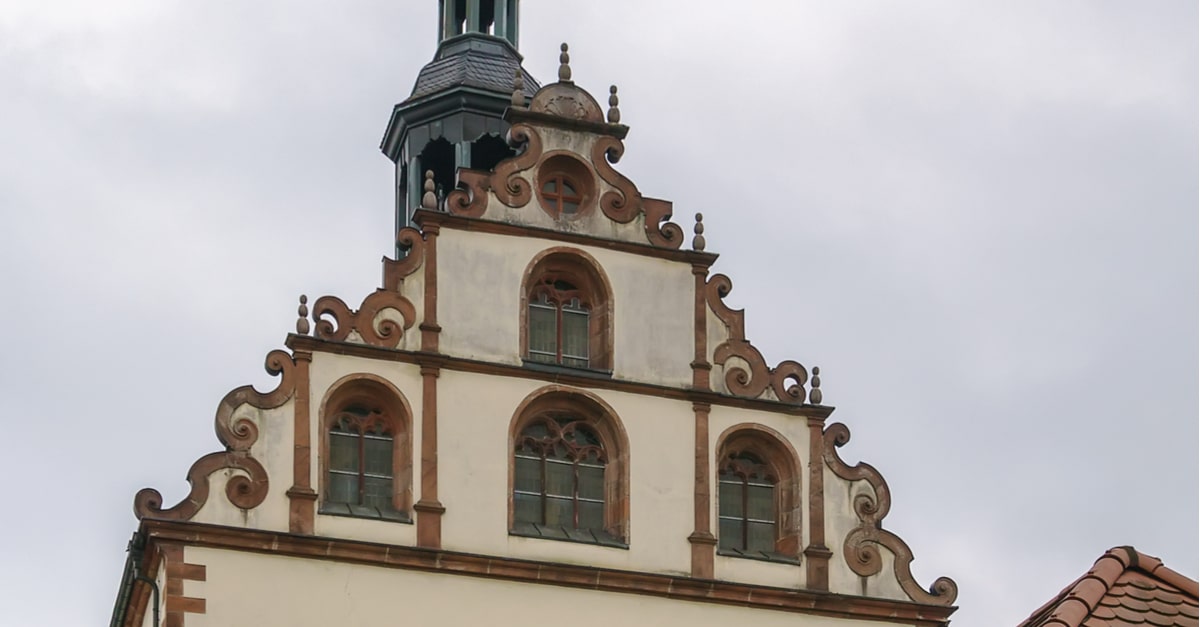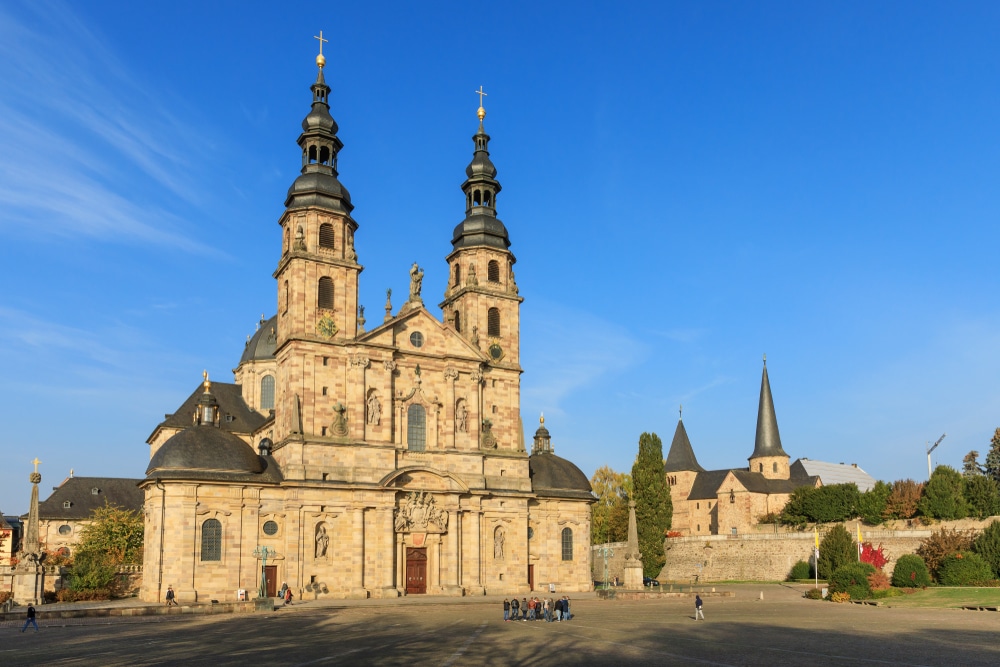St Mary's Abbey
In the middle of the city of Fulda, the Benedictine Abbey of St. Mary presents itself as an island of peace and tranquillity. The historic city monastery is not only an architectural jewel, because behind the monastery walls is a very worth seeing monastery complex. As one of Fulda's historically interesting sights, the abbey attracts visitors from all over the world. In addition to a tour of the Benedictine abbey, a longer stay with the Benedictines is also possible thanks to a guest house.

One of the most impressive monastery complexes in Germany
At first glance, the Benedictine abbey appears rather inconspicuous. Thus, when walking through the Nonnengasse, it is above all the church of the complex that catches the eye. But behind the walls from the 17th century is not only a place of peace and quiet, but also a garden worth seeing and much more. The abbey of the Benedictine nuns was built according to the tradition of the medieval monasteries. The size and shape of the monastery has been preserved to this day, making it one of the few monasteries in Germany that can still boast its original building fabric.
The monastery church invites you to take a break
In the middle of the city, the church of the Benedictine Abbey of Fulda attracts visitors with its interesting architectural history. Due to the 30-year war, the construction took more than 50 years and this ensured that different architectural influences can still be seen in the impressive church today. The church was consecrated in 1678 and at first glance it is clear that this church is a late Gothic hall church. The gables, however, reflect the style of the Renaissance and the portal is in the early Baroque architectural style. Today, the interior of the church is dominated by clear forms and thus the church and the atrium inspire by their simple elegance. Although the interior decoration was in the baroque style at the time of the consecration, it was later redesigned in the neo-Gothic-neo-Romanesque architectural style. However, the church did not receive its current interior until after the Second World War, whereby the Benedictine Sister Lioba Munz OSB played a leading role in the design as an artist and, among other things, designed the impressive windows of the church.
Special features of the monastery complex
One of the special features of the complex is the staircase leading to the high altar, as it was modelled on the "Holy Staircase" in the Lateran Palace in Rome. The altar room is also decorated with two works by Sr. Lioba Munz. Whoever visits the monastery should definitely plan a detour to the 2,000 square meter monastery garden. This is like an oasis in the middle of the city. Here, among other things, fruit, vegetables, lettuce and wonderful herbs are planted. Especially the early medieval herb garden is impressive and inspires with its scents. If you like, you can also take a little time out here in the garden and sit down on one of the benches. A nice shopping possibility is the clearly arranged shop, which is run by the sisters of the abbey. Besides books, handicraft items are offered here as well as products from their own production and from other monasteries. Those who would like to enjoy the magic of the abbey for a longer time have the possibility to spend a few days in the guest house of the Benedictine nuns.

